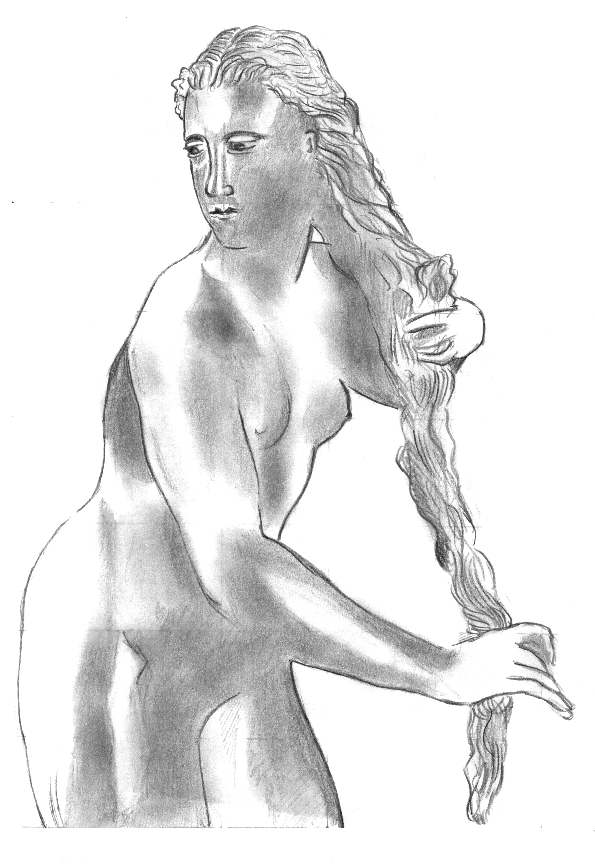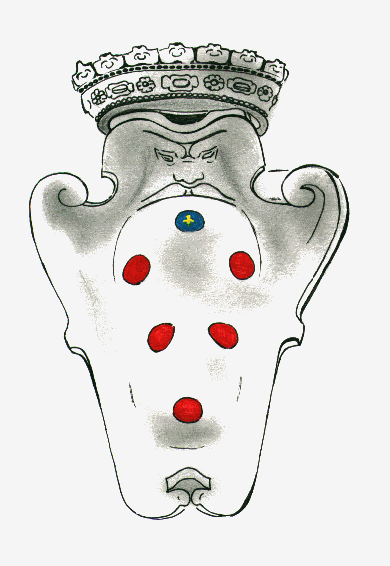
VILLA PETRAIA

The fountain of "Venus/Fiorenza"
(Giambologna)

TEXT: Mrs. Silvia Mascalchi
TRANSLATED BY IVB erica, I.T.C.G.
"P. Calamandrei"
EDITED BY Mrs Jennifer Celani & Mrs Rita Manzini
LAY OUT: IVB erica
ILLUSTRATIONS: Valentina Albini (IVBerica)
THE GARDEN OF VILLA "La Petraia"
Villa Petraia and its grounds became Medici property during the mid 16th century. Among the previous owners we can mention the Brunelleschi and the Strozzi families. In 1566 Villa Petraia belonged to the Grand Duke Cosimo I : in 1568 he gave it to his son Ferdinando who became Grand Duke in 1587 after his brother Francesco I had died heirless. In 1588 Ferdinando I, continuing what his father had started, entrusted the restoration works of the villa and of its grounds to the architect Lorenzo Pagni, who was able to complete them in about three years.
As to the history of this garden, it is very important to remember that the Grand Duke Ferdinando had been particularly interested in botany and gardening since the time he had lived in Rome as a Cardinal. In Florence he followed his father’s example. Cosimo had in fact created two of the most beautiful gardens in Europe: Boboli and Castello.
The best source to understand how the garden was once,is the little fresco lunette painted by Justus from Utens between 1599 and 1602, which is a part of a series that shows the Medici Villas and their gardens . At present this series of frescoes is visible at the " Museo Firenze Com’era" in Via dell’Oriolo in Florence.
From this document we understand that the garden was - and still is - divided on three levels: the upper level aligned with the villa which consisted of a large grovelly square in front of the northern entrance of the building and two side gardens; the middle level ,called "del vivaio " ,or the fish hatchery, made up by a big basin which has two areas with box-wood flower beds on either side; the lower level or " dei parterres ".
 Let’s see in detail what the garden was like, by
trying to trace back its history. Sideways to the building, on the same level with the
villa, there were two big gardens, each of them was divided in four squared parts and
crossed by two walks (paths). Originally, in this area of the garden , dwarf fruit trees
were cultivated,because Medici ladies and young girls liked them very much
and enjoyed picking their fruit without too much difficulty. On either side of the fish
hatchery –that is the big basin- ,there were two little parterres: two areas divided
in geometrical shaped parts. It was a "giardino dei semplici",
where according to the tradition, they used to cultivate aromatic plants,but also flowers
and exotic plants.
Let’s see in detail what the garden was like, by
trying to trace back its history. Sideways to the building, on the same level with the
villa, there were two big gardens, each of them was divided in four squared parts and
crossed by two walks (paths). Originally, in this area of the garden , dwarf fruit trees
were cultivated,because Medici ladies and young girls liked them very much
and enjoyed picking their fruit without too much difficulty. On either side of the fish
hatchery –that is the big basin- ,there were two little parterres: two areas divided
in geometrical shaped parts. It was a "giardino dei semplici",
where according to the tradition, they used to cultivate aromatic plants,but also flowers
and exotic plants.
At the two extremities of this "secret garden" there were two buildings, surmounted by an arcade: the one on the left, towards Sesto, corresponded to the "secret garden ", where the meals for the Grand Duke and all the people who were in close relationship with them, were prepared, and the one on the right which served as a greenhouse.
The lower garden was arranged into two big circular flower beds intersecting at the axis of the villa; they were divided into eight secondary flower beds through the intersection of a transversal walk with two longitudinal paths and were bounded by "cerchiate", or arbours of evergreen plants.These arbours were supported by huge trellisses as to form a kind of pleasant smelling tunnel and two green rooms situated in the middle of each main flower bed.
During the 17th and 18th centuries the garden didn’t undergo drastic changes,but in 1788 the fountain of Venus/ Fiorenza was moved there from the Villa di Castello.
The statue ( the parts in marble sculpted by Niccolò Tribolo and Pierino from Vinci and the bronze statue by Giambologna ) was placed in the eastern garden at the level of the villa that was called "piano della figurina " from this moment on.
During the 17th century Prince Lorenzo de’ Medici lived in this villa and commissioned some works in the garden, though his name is tied to the picture collection he had there and to the splendid frescoes with the " Medici Cycle" that he committed between 1636 and 1648, to the painter Baldassare Franceschini, also known as "the Volterrano". Under the Napoleonic rule, the garden was let run partially wild, whereas during the Lorraine Restoration a lot of improvements were made, such as the layout of a park uphill behind the villa,planned by the Bohemian gardener Josef Frietsch. According to the original project,the park should have included even Villa di Castello and Villa del Gondo.Although this plan was never completed, a linking path between Villa Petraia and Villa di Castello was created in 1833.
In the 19th century the garden of Villa Petraia was also famous for the outstanding collection of exotic plants. Under the Savoy reign ,the villa became Vittorio Emanuele II’s and Countess Mirafiore’s property.In 1872 in the garden called "piano della figurina", two big elliptical pagoda-roofed aviaries were built, on a project by the architect Ferdinando Lasinio.
Today the "Soprintendenza per i beni ambientali e architettonici di Firenze", Italy’s National Trust, is concerned with the garden and the villa: it takes care of its maintenance and ensures enjoyment to citizens and visitors.

FREE TOUR
INIZIATIVA IN COLLABORAZIONE CON LA SOPRINTENDENZA PER I BENI AMBIENTALI E ARCHITETTONICI DI FIRENZE, PRATO E PISTOIA.